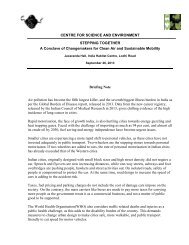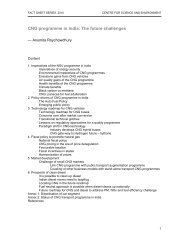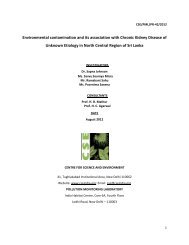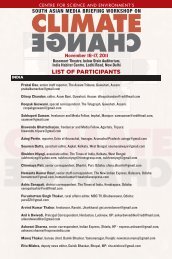CLIMATE CHANGE AND VECTOR BORNE DISEASES
CLIMATE CHANGE AND VECTOR BORNE DISEASES
CLIMATE CHANGE AND VECTOR BORNE DISEASES
You also want an ePaper? Increase the reach of your titles
YUMPU automatically turns print PDFs into web optimized ePapers that Google loves.
Temperature thresholds (0C) for pathogens and<br />
vectors of major vector borne diseases<br />
Disease Pathogen Minimum<br />
Temp<br />
Malaria Plasmodium<br />
falciparum<br />
Plasmodium<br />
vivax<br />
Maximum<br />
temp<br />
Vector Minimum temp<br />
for vector<br />
16–19 C 33–39 Anopheles 8–10 (biological<br />
activity)<br />
14.5–15 C 33–39 Anopheles 8–10 (biological<br />
activity)<br />
Dengue Dengue virus 11.9 not known Aedes 6–10<br />
Chagas<br />
disease<br />
Schistosom<br />
iasis<br />
Lyme<br />
disease<br />
Trypanosoma<br />
cruzi<br />
18 38 Triatomine<br />
bugs<br />
Cercaria 14.2 >37 Snails<br />
(Bulinus and<br />
others)<br />
Borrelia<br />
burdorferi<br />
Not yet<br />
determined<br />
Not yet<br />
determined<br />
Ixodes ticks 5–8<br />
2–6 (survival) 20<br />
(biological<br />
activity)<br />
5(biological<br />
activity)<br />
25±2(optimum<br />
range)<br />
IPCC,2001

















